The newly assembled 85-foot Howard E. Tatel telescope in Green Bank, West Virginia began observing on February 13, 1959. The telescope was observing 24 hours per day. Some of its first observations include Cygnus A, Cassiopeia A, and Taurus A. Tatel became famous in 1960 for performing the world’s first SETI observations under the direction of Dr. Frank Drake.
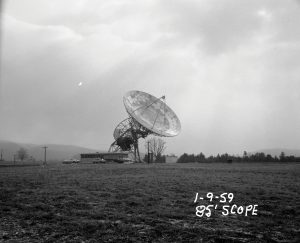
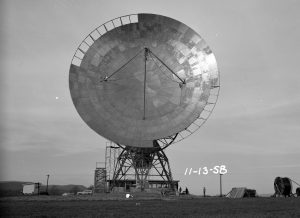
Panel Installation on 85-1
Each panel on the Tatel telescope (85-foot) was 0.125 inches of thick aluminum. In this image taken from the from front of the telescope, we can see that it is near completion with only 19 or 20 panels left to place.

Control Room of the Tatel
This is the control room for our very first large telescope in Green Bank, West Virginia — the 85-foot dish antenna known as the Howard E. Tatel Telescope. This photo was taken in 1961 during the time of Frank Drake’s famous search for extraterrestrial signals.
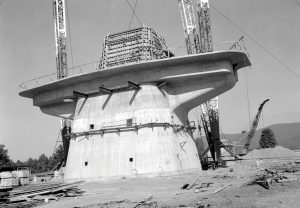
140-foot telescope’s massive control center
Building the world’s largest polar-aligned telescope is no simple or small task. This concrete bunker is the control building and base pedestal for the 140-foot (43-meter) telescope in Green Bank, West Virginia. The reinforced concrete base uses 140 tons of steel inside 5700 tons of 5000-psi concrete. It was built on the bedrock 30 feet below the surface in order to keep the 8200-ton telescope from falling over. The telescope’s control room, offices, and hydraulic pumps were housed inside the 3-foot thick walls of this monstrous building.
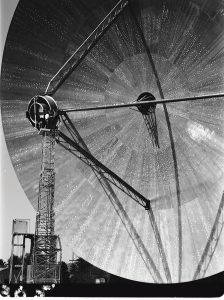
Switching out the 140-foot telescope’s receivers
The 140-foot telescope in Green Bank was built to house its receivers at the Prime Focus, the point above the parabolic dish where the radio waves come together. To switch receivers of different wavelengths, the 43-meter dish was lowered, a tower was rolled to the Prime Focus, and staff climbed it to make the careful swap. Now, the telescope’s receivers nestle in the center of the dish, and a small reflecting mirror sits at the prime focus.
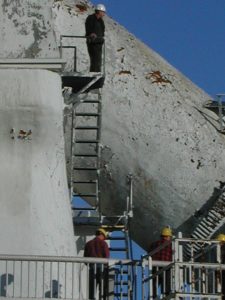
Maintenance on the 140-ft Polar Shaft
The largest polar shaft of any telescope in the world is a part of the 140-foot (43-meter) radio telescope in Green Bank, West Virginia. Its surface is covered in thermal insulating foam, the same foam used by the Space Shuttles’ External Tanks. Over time it cracks and flakes, so a crew (like the one pictured here) comes in to remove and reapply the foam.





